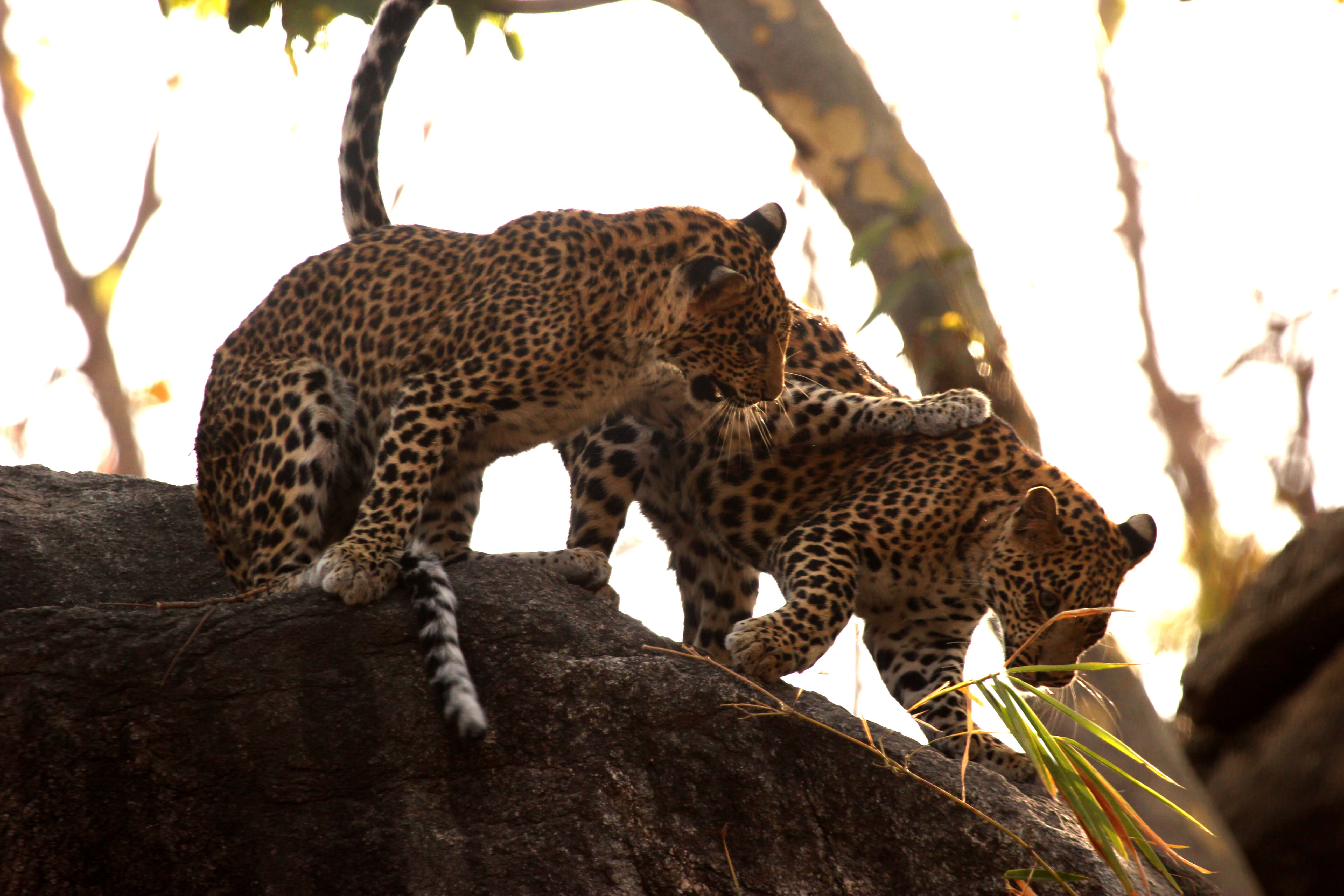On my first safari, and the month had just turned December. A chilly and cold morning and within less than five minutes a jungle cat was sighted. It disappeared into the tall grass and then further into the woods. Later on the in the day, a jackal trotted along without a care in the world. Amongst all this, of course, I must mention the multiple numbers of white eye buzzard who had made the woodland their stronghold. When I look back now, I must say that the impatient part of me hoped for the tiger lurking around the corner waiting to show itself and make my first-morning special. But it was not to be. Yet, now that I sit and write this I must say that it was hard to ignore the different predators large and small that Pench comprises of including the striped cat above all this in the food chain.
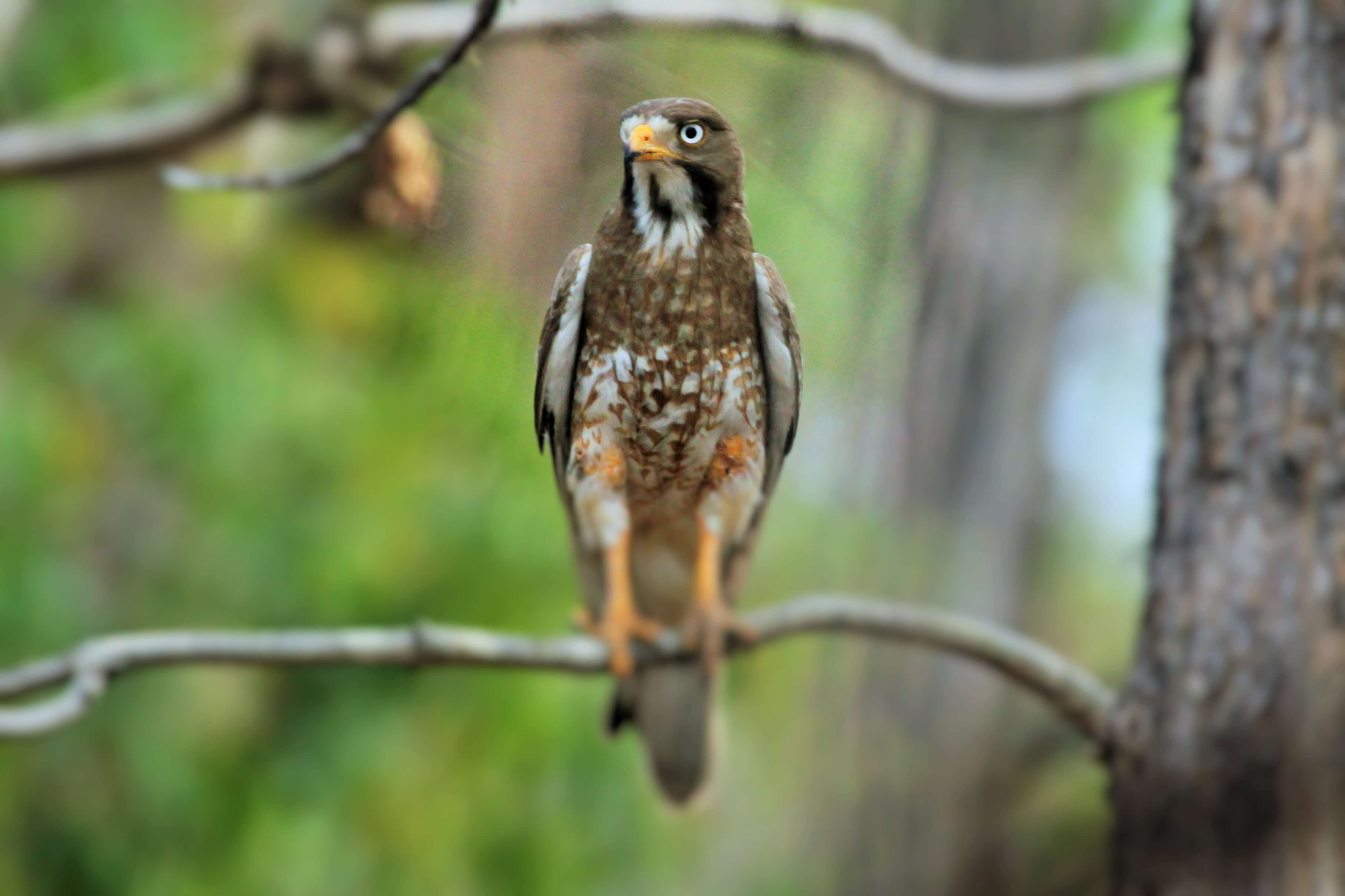
What allows Pench to have a successful number of predators in terms of both numbers and diversity is its high density of prey species including the axis deer. Pench ranks right up there with one of the highest numbers of spotted deer in comparison to other national Parks, tiger reserves or wildlife sanctuaries. To add to this are langur monkeys which are also found in abundance along with a few rhesus macaques who too seem very much at home in this dry deciduous forest. Larger prey species include nilgai or blue bull antelope, sambar deer and the Indian Gaur, a large and impressive wild cattle. Add to this a healthy number of diversity of avian fauna, good fish life on the Pench river running through the heart of the park and a great diversity of insect life that thrive in this teak dominated country. All these facets together make Pench a thriving forest of Eden and a perfectly suited habitat of a buffet on offer for the hunters as I found out in my four seasons of winter and summer spent here.
As a naturalist, patience was key and I learnt very soon that seeking tigers here was going to be a challenge. Yet my eyes kept out for the other details that went around and never did the jungle allow me to let my guard down. Looks can be deceptive and I found that out while on a morning game drive when a rather cute looking jungle owlet was seen with a small sized serpent in its talons. It was not the last time I saw it with dinner. Many other incidents proved that if you were prey, death could come from the sky as much as from the earth. On a different occasion, a different victim, this time a palm squirrel. It had met its death at the talons of a hawk eagle.
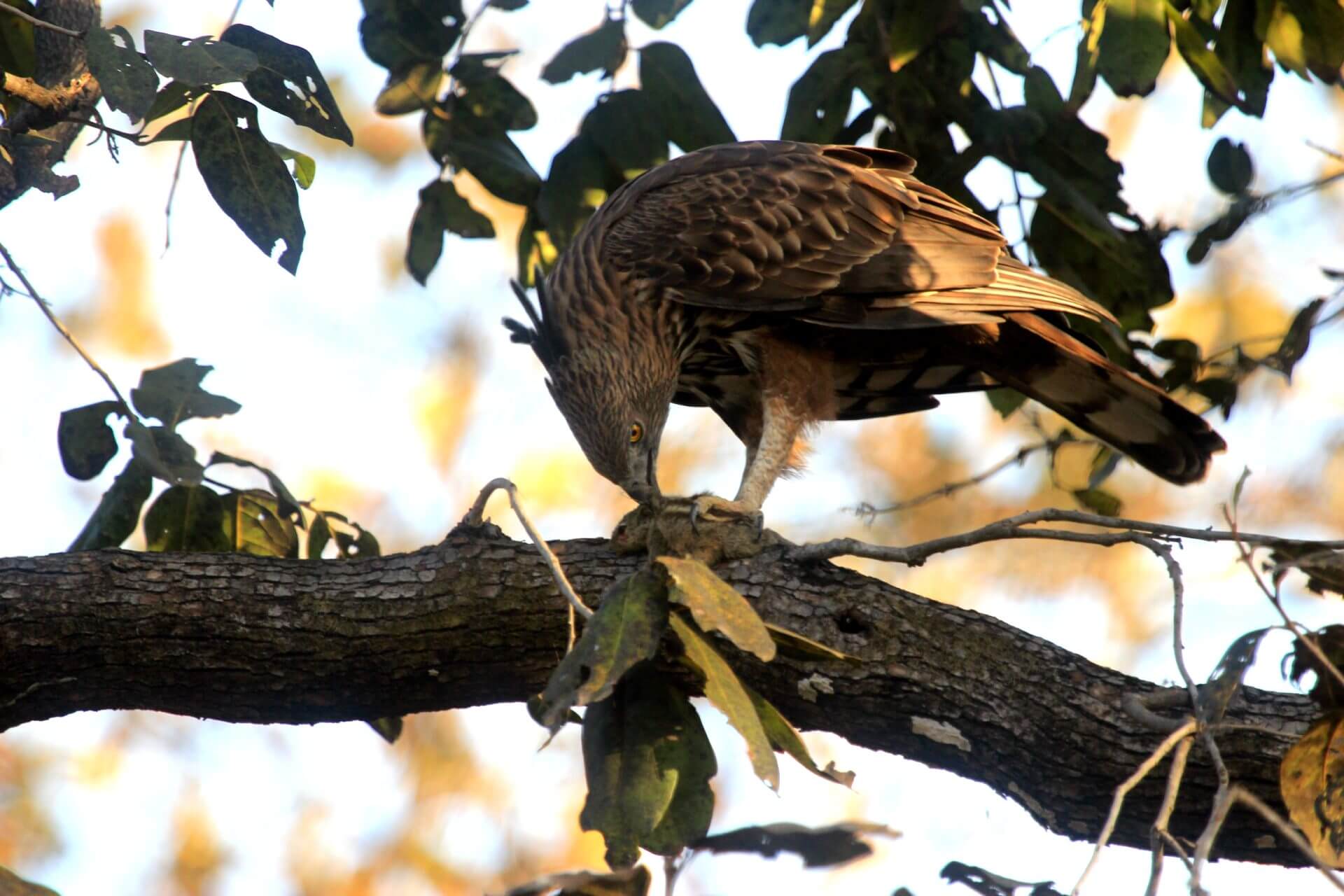
Another incident happened by the Pench river where I was busy watching ruddy shelducks and river terns when unexpectedly, there was a sudden flash of activity in the waters. Before I knew what had unfolded, a grey-headed fish eagle was off with a struggling fish in the grip of its talons. Clearly, the poor fish did not see it coming, and neither did I to start with. Buzzard presence could not be missed either and honey buzzards and white eyes dominated in their respective niche of open country and well-wooded habitats. While the honey buzzard fed well on the abundance of larvae supplied by bees and at times wasps too, on one occasion I noticed a fascinating incident of a white eye buzzard feeding on a grasshopper. Clearly, Pench is one of the best places to see birds of prey and I was fortunate to witness all this first hand.
Many memorable incidents include a special evening while driving back from the park to camp. Dusk had fallen and the lights had faded giving way to nocturnal life to move about. As I winded the jeep through the buffer forests with a group of journalists on board, we caught sight of a huge rock python passing through the road as it slipped away into the darkness of the forest. Its sheer size and constricting muscles seemed intimidating enough when I got down to have a closer look. Hilly and rocky terrain with good leaf cover and plenty of rock shelters give the rock python a perfect chance at becoming a successful predator in this thriving jungle book of Kipling. This particular ‘kaa’ that I saw, deserved every inch of respect. Another reptile which hunts actively and scavenges readily at any given opportunity is the monitor lizard. A miniature form of the Komodo, it is easy to forget about their existence in the jungle till summer arrives when they make themselves more visible. Monitor lizards are active egg snatchers by nature but in addition to this, also very skilled hunters of small game.
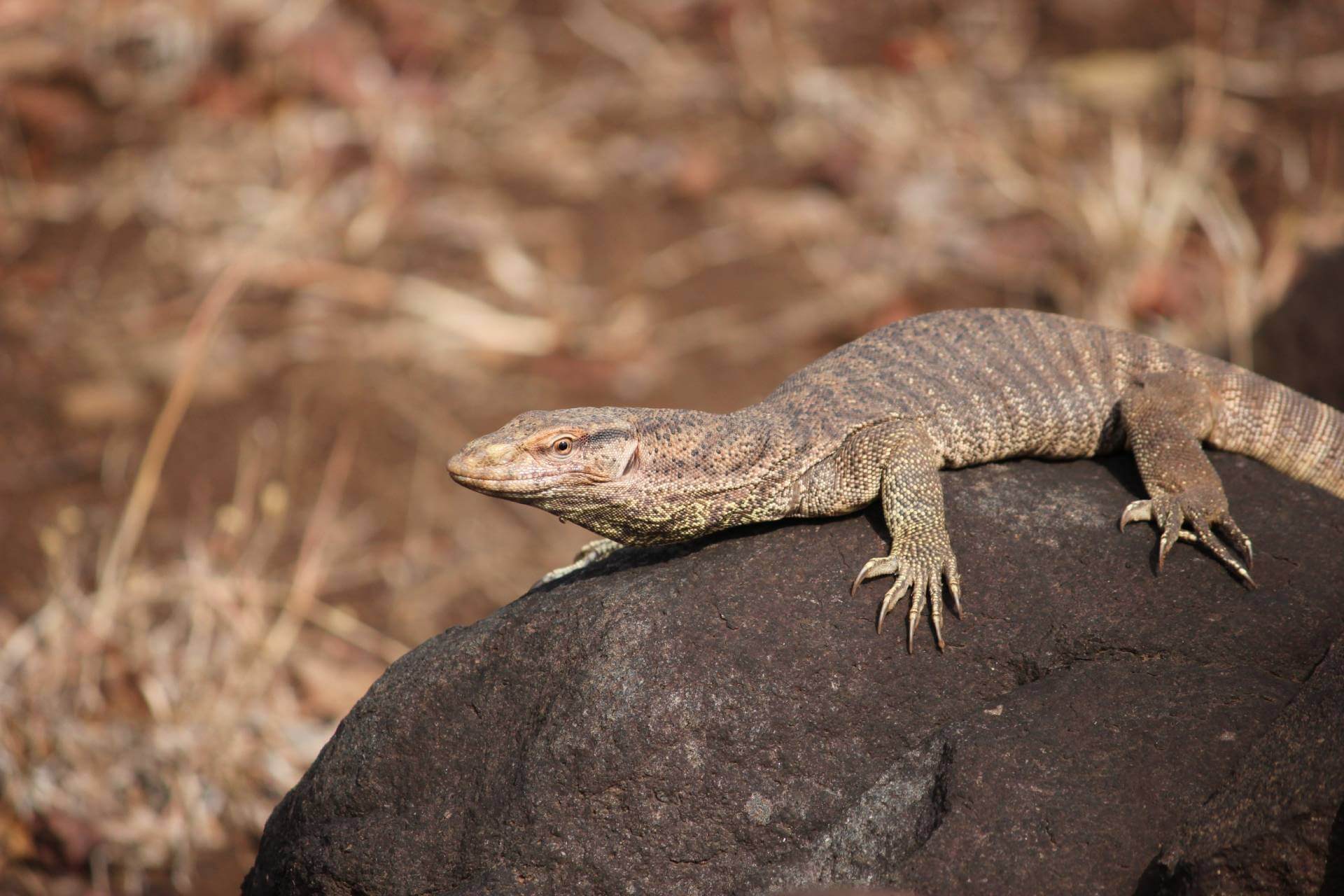
Amongst all this, it was inevitable that predators would cross paths with one another and it is here where rivalry and competition of predators are seen in real. One such example happened earlier this year when a jungle cat had to make a run for it when it encountered a golden jackal who chased it deep into the woods before I lost sight of both.
The larger predators showed up on few occasions but when they did, sightings were special and all worth the wait. One such incident I can recall happened to be on a hot day in late March. The morning had yielded a male tiger sighting, but my photography guests from Scandinavia rode their luck into the evening when we encountered a tigress cooling off at a waterhole. What followed after this was far from what we had prepared ourselves for. A small pack of five wild dogs trotted towards the same waters where the tigress lay. In a matter of minutes, the calm and still ambience of the jungle changed when the tigress got off her comfortable spot trying to pursue into chasing down a couple of the dogs while the rest flee. The dogs, of course, were too agile for her, but the whole air filled with cackling alarms of the dogs and the growls of the tigress. The jungle was at its most tense and looking back at that evening now still gives me goosebumps while my guests watched in awe. Something unique, something special had unfolded that evening and we were the witness.
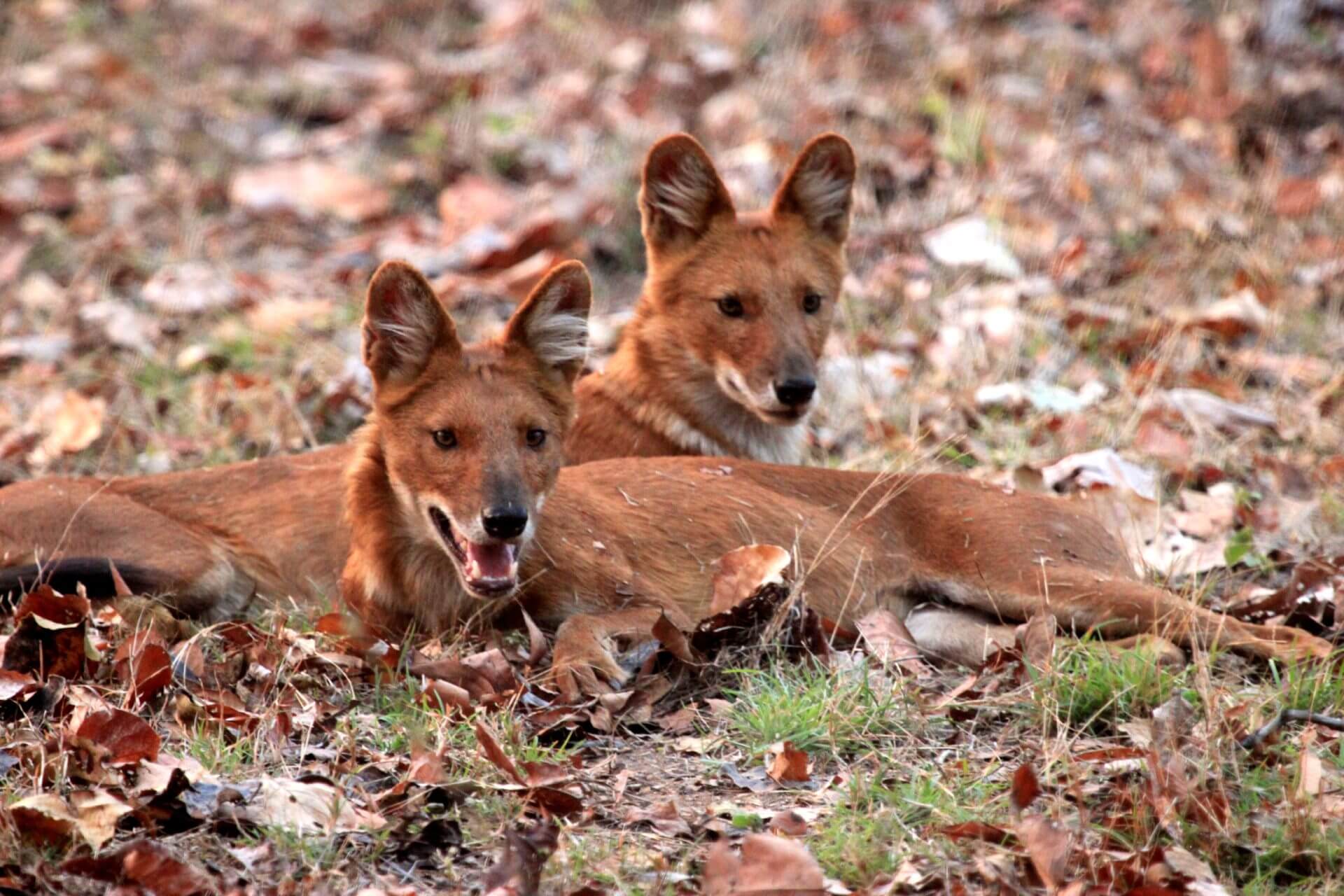
Another such incident happened when we encountered a pack of eight wild dogs near a waterhole. The langurs continuously barked their alarm. It got me wondering since langurs unless got off guard are usually calm up on the tress even if dogs are seen in the vicinity. On a closer look at the higher branches and we noticed the reason for the monkey tension. Two leopards on two separate branches had been treed up by the pack of wild dogs, and they seemed to be holding on for dear life. As we sat and watched this go on, wondering about the escape routes for the leopards, out came a jackal trotting on to the scene that saw the dogs chase it with serious intent, the whole scene of the chase disappearing into the thick lantana. Such was the blessing for the cats, as both the leopards carefully climbed down before making a dash for cover.
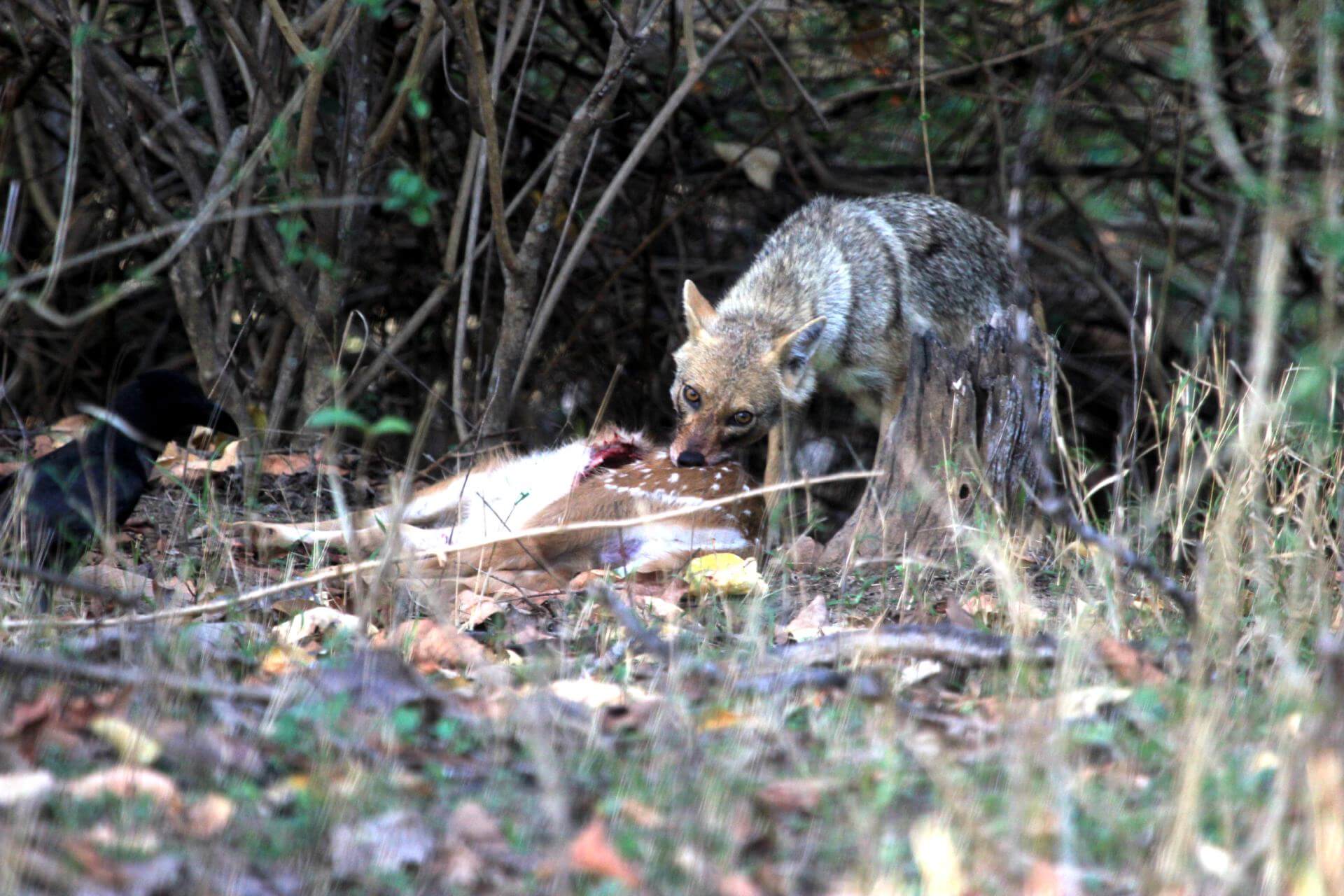
Encounters of predators crossing our paths and that of one another happened more often than I thought as I spent more time in these jungles. While I witnessed the challenges of each predator unfold before me, their very presence both big and small is what makes Pench a thriving story of the fictional ‘jungle book’. For as long as we are only witness and nothing more to all the drama that takes place in these jungles, there will surely be more predator stories to share.

